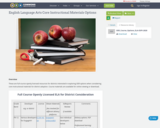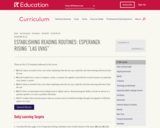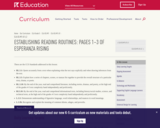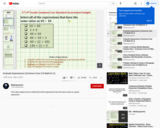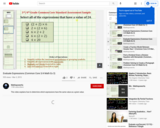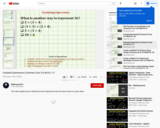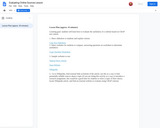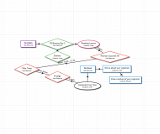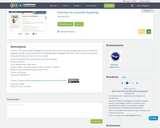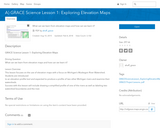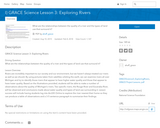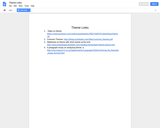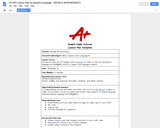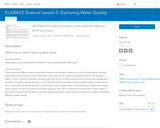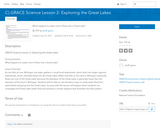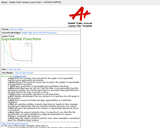In this lesson, students read pages 4-22, "Las Uvas," in Esperanza Rising and as a whole group identify how the structure of the chapter contributes to the overall story (RL.5.1, RL.5.5).
In triads, students then research one of three topics to build background knowledge about the historical setting of Esperanza Rising. Working in expert groups allows small groups to engage in an effective, time-efficient comprehension of a broader topic because students become an expert in one topic and hear oral summaries of the others to gain an understanding of the broader topic.
This lesson is the first in a series of three that include built-out instruction for the use of Goal 1 Conversation Cues. Conversation Cues are questions teachers can ask students to promote productive and equitable conversation (adapted from Michaels, Sarah and O'Connor, Cathy. Talk Science Primer. Cambridge, MA: TERC, 2012. Based on Chapin, S., O'Connor, C., and Anderson, N. [2009]. Classroom Discussions: Using Math Talk to Help Students Learn, Grades K-6. Second Edition. Sausalito, CA: Math Solutions Publications). Goal 1 Conversation Cues encourage all students to talk and be understood. As the modules progress, Goal 2, 3, and 4 Conversation Cues are gradually introduced. See the Tools page for the complete set of cues. Consider providing students with a thinking journal or scrap paper. Examples of the Goal 1 Conversation Cues you will see in the next two units are (with expected responses):
After any question that requires thoughtful consideration:
"I'll give you time to think and write or sketch."
"I'll give you time to discuss this with a partner."
To help students share, expand, and clarify thoughts:
"Can you say more about that?"
"Sure. I think that _____."
"Can you give an example?"
"OK. One example is _____."
"So, do you mean _____?"
"You've got it./No, sorry, that's not what I mean. I mean _____."
Note that Goal 1 Conversation Cues (and expected student responses) were built into the Discussion Norms anchor chart in Lesson 1. Conversation Cues and discussion norms are similar in that they seek to foster productive and collaborative conversation. Furthermore, Conversation Cues aim to ensure equitable conversation by gradually building student capacity to become productive, collaborative participants. Goal 1 Conversation Cues focus on the fundamentals of encouraging students to talk and be understood. Goals 2-4 take students to deeper levels of conversation, from listening to others, to deepening their thinking, to thinking with others.
Students practice their fluency in this lesson by following along and reading silently in their heads as the teacher reads pages 4-22 of Esperanza Rising aloud during Opening A.
In this lesson, the habit of character focus is on working to become an ethical person. The characteristic that students practice is respect, as volunteers share out personal reflections on what happened in Esperanza Rising.
The research reading that students complete for homework will help build both their vocabulary and knowledge pertaining to human rights. By participating in this volume of reading over a span of time, students will develop a wide base of knowledge about the world and the words that help describe and make sense of it.
